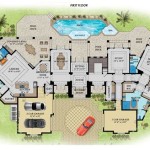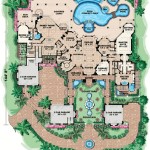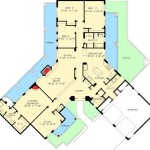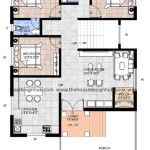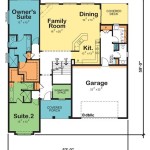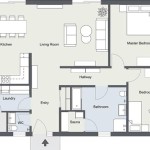Log Home Designs: Floor Plan Options for Your Dream Cabin
Building a log home is a unique and rewarding experience. With its rustic charm and timeless appeal, a log home can provide both comfort and a sense of connection to nature. However, before embarking on this exciting journey, it's essential to carefully consider the floor plan design that will best suit your lifestyle and needs.
The Importance of Floor Plans in Log Home Design
A floor plan is a crucial aspect of log home design as it determines the flow and functionality of the living spaces. It not only defines the arrangement of rooms and their sizes but also influences the overall comfort, efficiency, and aesthetic appeal of the home.
Thoroughly assessing your needs and preferences is paramount before finalizing a floor plan. Factors to consider include the number of bedrooms and bathrooms, the desired level of privacy, the amount of natural light, and the preferred outdoor living space.
Common Floor Plan Options for Log Homes
There are various floor plan options available for log homes, each offering unique advantages and considerations:
1. One-Story Floor Plans
One-story floor plans are ideal for those who prefer a single-level living experience. They typically feature an open and spacious layout with fewer hallways, creating a more accessible and cohesive living space. These plans are suitable for both smaller and larger homes and can be designed to maximize natural light and outdoor access.
2. Two-Story Floor Plans
Two-story floor plans offer more vertical space and provide additional options for room placement and layout. They typically feature bedrooms and bathrooms on the upper level, creating a more private sleeping area, while the ground floor accommodates common areas, such as the kitchen, living room, and dining room. Two-story plans are particularly well-suited for homes with limited square footage.
3. Split-Level Floor Plans
Split-level floor plans utilize different elevations to create distinct living areas. They offer a sense of separation between private and public spaces and can adapt to sloping or uneven terrain. Split-level plans are often chosen for homes with multiple occupants who desire varying degrees of privacy.
4. Open Floor Plans
Open floor plans emphasize a sense of spaciousness by minimizing walls and partitions between living areas, such as the kitchen, living room, and dining room. They promote a more social and interactive atmosphere and create a seamless transition between rooms. Open floor plans are particularly well-suited for individuals who value a sense of openness and communal living.
5. Traditional Floor Plans
Traditional floor plans follow a more conventional layout with separate rooms for specific functions, such as living rooms, dining rooms, and kitchens. They offer a more defined separation between private and public spaces and can provide a sense of coziness and intimacy. Traditional plans are often favored by those who appreciate classic and timeless designs.
No matter which floor plan option you choose, it's essential to ensure that it aligns with your lifestyle and preferences while complementing the overall aesthetic and functionality of your log home.
Additional Considerations for Log Home Floor Plans
In addition to the main floor plan, there are several additional considerations to keep in mind:
- Loft Space: Incorporating a loft space can add extra living area and create a cozy and intimate atmosphere. Lofts are often used as bedrooms, playrooms, or additional storage space.
- Outdoor Living Spaces: Log homes are known for their connection to nature, so it's important to consider outdoor living spaces, such as porches, decks, or patios, in the floor plan. These spaces extend your living area and provide opportunities to enjoy the surrounding landscape.
- Storage and Utility Areas: Ample storage and utility areas are essential for maintaining a well-organized and functional home. Consider incorporating mudrooms, pantries, closets, and utility rooms into the floor plan.
- Accessibility Features: If accessibility is a concern, consider including features such as wider doorways, ramps, and accessible bathrooms. These modifications can ensure that the home remains comfortable and accessible for all occupants.
By carefully considering the floor plan design and incorporating these additional elements, you can create a log home that perfectly reflects your lifestyle and maximizes its unique charm and functionality.
Conclusion
Choosing the right floor plan for your log home is a crucial decision that will shape the experience of living in this unique and inviting space. By considering your needs, preferences, and the specific characteristics of log homes, you can design a floor plan that seamlessly blends comfort, functionality, and timeless appeal, creating a home that you will cherish for years to come.

Floor Plans Applewood Log Homes

Best 4 Bedroom Log Cabin House Plans Home Floor

Standout Log Cabin Plans Escape To An Earlier Gentler Time

Golden Eagle Log Homes Mansion 12865al Floor Plan Cabin Plans Home

Edgewood 2 Bed Bath 1 5 Stories 1148 Sq Ft Appalachian Log Timber Homes Hybrid Home F Floor Plans Cabin House

Sample Log Home Designs Cowboy Homes

Custom Log Home Floor Plans Katahdin Homes

Log Home Floor Plans 1500 2400 Sq Ft Cascade Handcrafted Homes

Stylish And Functional Floor Plan With A Spacious Master Suite

Log Home Plans Floor And Designs For Houses

